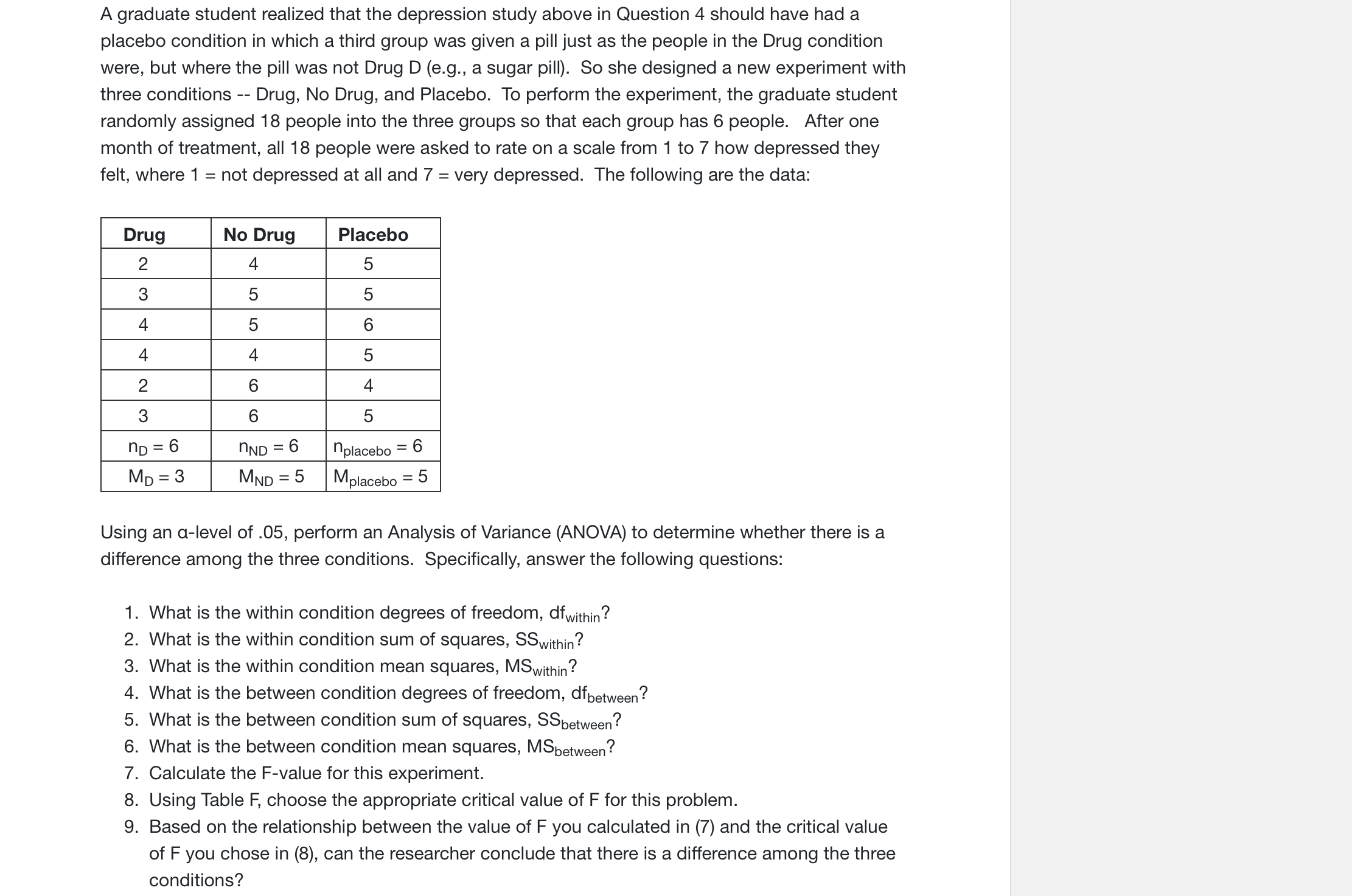Question
A researcher is interested in whether a new antidepressant drug D has an effect on people's self-rating of depression.She randomly assigns 12 people into two
A researcher is interested in whether a new antidepressant drug D has an effect on people's self-rating of depression.She randomly assigns 12 people into two groups so that each group has 6 people. One group is given drug D daily, and the other group is not given drug D.Call these the Drug group and the No Drug group, respectively.After one month of treatment, all 12 people were asked to rate on a scale from 1 to 7 how depressed they felt, where 1 = not depressed at all and 7 = very depressed.The following are the data:
drug=2,3,4,4,2,3,[ND=6
[MD=3
[ SD=0.89
no drug 4,5,5,4,6,6[nND=6
MD=3
SD=0.89
Using an ?-level of .05, perform a two-tailed t-test to determine whether there was an effect ofDrug D on depression ratings.Specifically, answer the following questions:
- What is the total degrees of freedom for this problem?
- Calculate the standard error of the difference between sample means.
- Calculate the t-score for the difference between sample means, MD-MND
- Using Table T, what is the critical value of t for this problem?
- Based on the relationship between the value of t you calculated in (3) and the critical value of t from (4), can the researcher conclude that there is an effect of Drug D on on depression ratings?

Step by Step Solution
There are 3 Steps involved in it
Step: 1

Get Instant Access to Expert-Tailored Solutions
See step-by-step solutions with expert insights and AI powered tools for academic success
Step: 2

Step: 3

Ace Your Homework with AI
Get the answers you need in no time with our AI-driven, step-by-step assistance
Get Started


